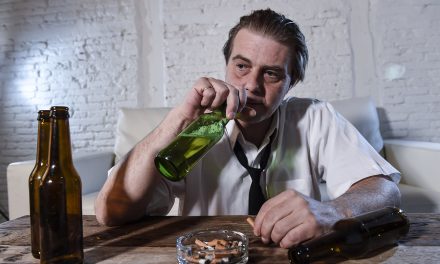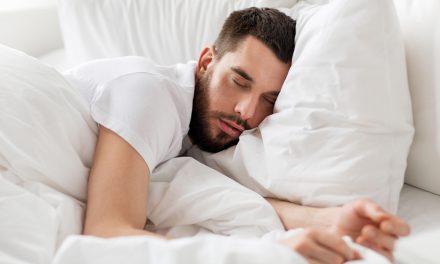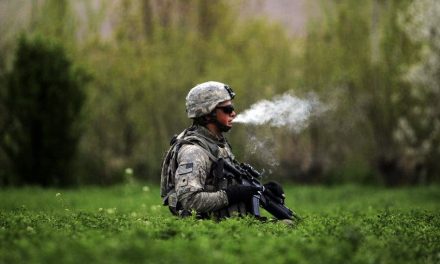(Editor’s Note: Please see the update below from the Monsanto Roundup trial, courtesy of Organic Consumers Association.)
Dewayne Johnson v. Monsanto Company is the first Roundup cancer lawsuit to proceed to trial. Plaintiff Dewayne “Lee” Johnson, a 46-year-old former school groundskeeper, alleges exposure to Monsanto’s Roundup weed killer and its active ingredient, glyphosate, caused him to develop non-Hodgkin lymphoma (NHL).
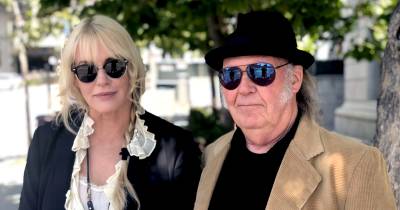
Johnson is one of thousands of plaintiffs to file suit against Monsanto in state court over the alleged link between Roundup and NHL. More than 450 other lawsuits filed in federal court are currently pending in U.S. District Court for the Northern District of California. Since the start of the Johnson trial, Robert F. Kennedy, Jr., co-counsel to Baum Hedlund Aristei & Goldman, has provided running commentary of the events in court each day. Here’s his post for Aug. 3 on the Monsanto trial:
Fifty years ago, in their popular hit “Chicago,” Crosby, Stills, Nash & Young asked Americans to take notice of a federal courtroom in the Windy City, where a black political activist sat bound, gagged and shackled to a chair in a legal drama where America’s justice system, values and character seemed to all be on trial.
Today, the most outspoken member of that band, Neil Young, visited another American courtroom. This one in San Francisco, where the essential values and future of our country once again are on trial. Young and his fellow activist Daryl Hannah attended the trial of Dewayne Lee Johnson, a young black man who is dying of a debilitating and agonizing form of non-Hodgkin’s lymphoma that he says he contracted from contact with the ubiquitous weed killer Roundup.
RELATED STORY:
Johnson’s case is the speartip of a new American rebellion. It marks the first jury trial of similar legal claims already filed by more than 5,000 Americans against Roundup’s manufacturer Monsanto (now owned by the German chemical giant Bayer)!

Neil Young and Daryl Hannah at the courthouse getting ready to go into the courtroom to support of Dewayne Johnson.
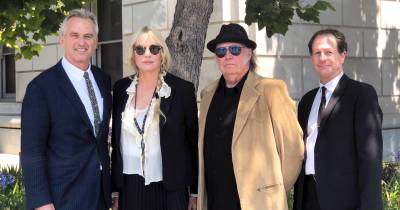
Robert F. Kennedy, Jr., Daryl Hannah, Neil Young and Michael Baum outside the courthouse where the Monsanto Roundup trial is taking place.
“At Bayer’s Monsanto, financial interests are placed over the health of fellow human beings and vital life support systems,” Young and Hannah told me. “We are here for justice, in support of Dewayne Johnson and the many children who played on those same school grounds where he worked.”
Monsanto has, to date, easily fended off every challenge to its global assault on farmers, food and public health with the same ease—and using the same tactics—that Big Tobacco pioneered more than 60 years ago, shielding its own lethal product that was killing 1 in every 5 of its customers who used it as directed.
Americans who are thoughtful about justice, democracy, healthy food and wholesome communities hope that Johnson’s trial is the long-awaited reckoning for a company with a business model that commoditizes people and landscapes. Many around the globe believe Monsanto poses an existential threat to everything that decent people value.
Hannah and Young came to San Francisco to see Monsanto face an American jury in a case that puts both the company and our justice system on trial. Young and Hannah have spent their long careers as artists and activists fighting for healthy food, farms and wholesome safe communities. Monsanto is arguably the biggest threat to all those things. This case finally gives us hope for justice for the many people this company has harmed.
Young has been a persistent thorn in the side of Monsanto. In 2015, he released “The Monsanto Years,” an album he recorded with the band, “The Promise of the Real,” fronted by Lukas and Micah Nelson, the sons of Willie, another famous farm advocate. The album sold nearly 100,000 copies in the U.S. in the first week and debuted at no. 21 on the Billboard Top 200.
Coterminous with the album’s release, Young premiered “Seeding Fear,” a documentary he co-produced that examines the repercussions of a lawsuit Monsanto filed against Alabama farmer, Michael White, over GMO seed patent infringement. White, a fourth-generation farmer, chronicles how Monsanto bullied farmers to bend to its will.
RELATED STORY:
“It is a story that takes 10 minutes of your time to see,” Young said of the documentary. “It is a simple human one, telling the heartbreaking story of one man who fought the corporate behemoth Monsanto, and it illustrates why I was moved to write ‘The Monsanto Years.’”
In 2014, Young teamed up with Daryl Hannah to lead a march by the “Cowboy and Indian” alliance to reject the proposed Keystone XL pipeline. Hannah, a longtime activist and environmental advocate, is executive producer of the 2012 documentary, “Greedy Lying Bastards,” a scathing critique on the climate change misinformation campaign waged by the oil industry and funded by think tanks.
Here are key highlights from the Monsanto trial based off of Robert F. Kennedy’s daily entries:
Day 1, July 9: opening statements
Here’s a link to the opening statement for the Plaintiff by Brent Wisner of Baum Hedlund Aristei & Goldman:
“This case really is about choice. It’s about the right of every single person in this room to make a choice about what chemicals they expose themselves, their family or their children to…If you don’t warn, you don’t give someone the choice, and if someone gets hurt from that, or, God forbid, someone gets cancer, then I believe someone should be held responsible for that.”
Day 2, July 10: Did Monsanto suppress its own research?
On day 2 of the Johnson trial, the jury heard deposition testimony from Monsanto toxicologist, Dr. Mark Martens. Johnson’s attorneys asked Martens why Monsanto decided to abandon research conducted in 1999, by Dr. James Parry, an independent toxicologist Monsanto hired as a consultant after deeming him a top expert in his field.
Dr. Parry’s research concluded that glyphosate and the Roundup formulation may cause genetic mutations, a potential precursor to cancer. According to Martens, Monsanto did not allow independent scientists to review Dr. Parry’s research for further study after it was received, nor did the company give Dr. Parry’s research to the U.S. Environmental Protection Agency (EPA).
Day 3, July 12: Dr. Christopher Portier discusses the tumors in glyphosate animal studies, and the EPA’s initial findings in 1985, that glyphosate is a “possible” human carcinogen
On day 3, Judge Suzanne Ramos denied attorney Brent Wisner’s request that epidemiology/toxicology expert, Dr. Christopher Portier, be permitted to share his opinions before the jury concerning the amount of glyphosate exposure the state of California has determined causes cancer.
Wisner argued that a previous ruling allowed Monsanto witnesses to testify about foreign regulatory decisions to not list glyphosate as carcinogenic, so it did not make sense to deny the plaintiff the opportunity to discuss California’s own regulatory decision to list glyphosate as a chemical known to the state to cause cancer.
Nevertheless, Dr. Portier testified that his analysis of 13 rodent studies on glyphosate, and the findings of the International Agency for Research on Cancer (IARC) led him to conclude that exposure to glyphosate causes NHL. Portier said:
“If you have multiple tumors of the same type in multiple species, it adds to the strength of causality. By seeing lots of different tumor types hit in the same animal, the more important it is to the human causal.”
Day 4, July 13: Dr. Christopher Portier discusses flaws with U.S. and EU regulatory Evaluations for glyphosate
On day 4, Monsanto counsel, Kirby Griffis, tried to rattle Dr. Christopher Portier during cross-examination, confronting the expert witness with the EPA’s conclusion that glyphosate is not likely to be carcinogenic to humans. During testimony, Dr. Portier slammed U.S. and European regulators over their methodology in evaluating glyphosate.
For example, Dr. Portier testified that European Food Safety Authority (EFSA) missed 15 tumors in a series of rodent studies on glyphosate because the agency used the wrong methodology. During cross-examination, he said:
“My entire career been about using scientific evidence to make decisions, primarily about the carcinogenicity of compounds, and we’ve worked for years and years to do that appropriately. This was just so amazingly wrong in the way they were doing it.”
Day 5, July 16: fireworks during cross-examination as Monsanto lawyer attempts to discredit expert witness
On day 5, as cross-examination continued Monday, Monsanto counsel Kirby Griffis accused cancer expert, Dr. Christopher Portier, of basing his opinion that glyphosate and Roundup cause cancer on lucrative consulting contracts from law firms and not on scientific evidence.
“You said EPA was ‘so amazingly wrong;’ EFSA was ‘so amazingly, astonishingly wrong.’ ECHA (European Chemicals Agency) got one thing right,” Griffis said, attempting to poke holes in Dr. Portier’s prior testimony about U.S. and European regulators’ evaluations of glyphosate.
Undaunted, Dr. Portier responded: “It’s absolutely clear they’re not using [their guidelines] appropriately.”
During redirect, Dr. Portier also pointed out that a reassessment report for glyphosate conducted by a German agency that participated in EFSA’s review of glyphosate, contained verbatim passages written by herbicide manufacturers.
Day 6, July 17: Plaintiff Dewayne Johnson called Monsanto to ask if using Roundup caused his skin rashes, later diagnosed as non-Hodgkin lymphoma
On day 6, Monsanto executive Dr. Daniel Goldstein attempted to rebut plaintiff Dewayne “Lee” Johnson’s allegation that he failed to tell him whether exposure to Monsanto’s Roundup weed killer caused him to develop skin rashes over a significant portion of his body.
In his lawsuit, Johnson alleges he developed cancerous lesions on his body after using Roundup between 2012 and 2015, as part of his groundskeeper job, including two instances where he was drenched in the weed killer.
The jury saw video testimony from Dr. Goldstein, who was asked whether he returned calls that Johnson had made to the company in 2014, asking if exposure to Roundup created the widespread lesions all over his body.
Dr. Goldstein testified that he did not recall speaking to Johnson, though an internal Monsanto email shows that he intended to call Johnson.
“It would certainly be helpful to have spoken with him, and I don’t recall whether I did,” Goldstein testified.
Day 7, July 18: Tempers flare as Monsanto lawyer becomes visibly frustrated with cancer expert, Dr. Alfred Neugut
On day 7, oncology and epidemiology expert Dr. Alfred Neugut of Columbia University took the stand and things got a bit heated during his cross-examination. At one point, Monsanto attorney George Lombardi gave the court an inaccurate characterization of a statement Dr. Neugut had made. Dr. Neugut yelled back to Lombardi to stop “misquoting” him.
Another highlight was Dr. Neugut’s dismissal of the Agricultural Health Study, which Monsanto routinely points to as conclusive proof that glyphosate is safe. Like other expert witnesses for the plaintiff, Dr. Neugut told the jury about several key flaws with the study, including the imputation of data to make up for poor follow-up among the study’s subjects, which rendered the study a “throwaway.” Dr. Neugut said:
“You use imputation when you’ve got a screwed-up study with poor follow-up. Unfortunately, this is a case of measurings—with a gold scale, where it turns out the results just don’t turn out to be what they should be because there are so many problems.”
Day 8, July 20: Plaintiffs oncologist testified that exposure to Roundup “was a major contributing factor in the development of Mr. Johnson’s cutaneous T-cell lymphoma”
On day 8, the court heard from Cardinal Health oncologist and physician, Dr. Chadi Nabhan, one of Dewayne “Lee” Johnson’s medical witnesses. Dr. Nabhan testified that Lee Johnson’s exposure to Roundup “was a major contributing factor in the development of Mr. Johnson’s cutaneous T-cell lymphoma.”
One of Monsanto’s points of emphasis during the Johnson trial is how long it takes for cancer symptoms to manifest after exposure to a carcinogenic agent. Lawyers for the agrochemical giant say it takes 20 years, which would eliminate Roundup exposure as the cause of Mr. Johnson’s NHL.
Dr. Nabhan, however, told the jury that cancer symptoms can show in just one month. “There is no agreed-upon latency period with these types of exposures and these types of cancers,” said Nabhan, who specializes in lymphomas. “Some patients can develop the disease early on and some patients can develop it in 20 years.”
Day 9, July 23: Dewayne “Lee” Johnson testifies he “never would’ve sprayed that product on school grounds or around people if I knew it would cause them harm”
On day 9, Dewayne “Lee” Johnson and his wife, Araceli, took the stand and gave the jury a heartbreaking glimpse at how their lives have changed since Lee’s cancer diagnosis.
During her testimony, Araceli recalled when Lee first told her about his diagnosis. “I couldn’t believe it. My world just shut down,” she said, adding, “I only cried at night… it was very hard.”
In order to make a dent in the family’s rising medical bills, Araceli took a second job working 14-hour days while shuttling her two sons an extra 45 minutes to Napa Valley School District in hopes of providing them better educational opportunities.
When Lee took the stand, he testified in agonizing detail how he tried to hide the pain of his diagnosis from his family. “I’m trying to show my kids an example of how to deal with things and crying is not going to help you,” he said. “But I’m raising two little boys, so I’m teaching them to deal with pain and learn to deal with it and to deal with a situation if it comes to you. And sitting around sorrowful and crying is not going to help.”
Mr. Johnson also made it clear that he never would have used Roundup if he had known it causes cancer.
“I never would’ve sprayed that product on school grounds or around people if I knew it would cause them harm,” Mr. Johnson said in court on Monday. “It’s unethical, it’s wrong. People don’t deserve that.”
Day 10, July 24: Secret documents reveal Monsanto’s war on cancer scientists
On day 10, the jury heard video testimony from Monsanto toxicologist, Donna Farmer, who leads the chemical company’s deceptively named Product Safety Center.
Getting Farmer to testify proved to be a challenge. When our legal team sent a process server to subpoena her testimony, Farmer was observed fleeing through a backyard fence of her St. Louis home. We had the block staked out and successfully served the summons.
In her deposition, Farmer adamantly denied that her role at Monsanto was to protect Roundup until she was confronted with an internal company document showing that, in fact, her “number one goal is to defend and maintain the global glyphosate or Roundup business.”
Under questioning from attorney Mike Miller, Farmer admitted that her primary concern was regulatory compliance rather than public health, acknowledging that she orchestrated the ghostwriting of articles for supposedly independent scientists who agreed to defend glyphosate.
“There’s nothing wrong with that,” she said.
Day 11 & 12, July 25 & July 26: Disappointing rulings in Monsanto’s favor keeps important evidence from the jury
Judge Bolanos issued a series of rulings on Day 11 that favored Monsanto and prohibited plaintiff’s attorneys from presenting key evidence to the jury.
In one ruling, Judge Bolanos held that plaintiff’s expert, Dr. Charles Benbrook, could not offer any opinions or descriptions about a collection of Monsanto’s internal studies on Roundup’s health effects that are highly damaging to Monsanto’s case.
We had hoped to show the jury these documents, which involve transparently deceptive statistical machinations designed to cloud the results of Monsanto’s own glyphosate research. One important internal study shows that glyphosate causes cancer in mice. Another internal Monsanto research study detailed higher human skin absorption rates of the herbicide than reported elsewhere.
Day 12 started with more of the same; Judge Bolanos blocked us from mentioning Monsanto’s “TNO dermal absorption” studies, which found far higher rates of glyphosate and Roundup absorption through the skin than previously reported. The afternoon brought some good news, however, as plaintiff’s expert, Dr. William Sawyer, testified that glyphosate alone is “clearly” carcinogenic, and that Monsanto’s practice of adding chemical surfactants “increase and enhance [Roundup’s] carcinogenicity.”
Dr. Sawyer also noted that Lee Johnson’s job as Integrated Pest Manager for the Benicia School District required him to apply Roundup in ways that maximized his exposure. In fact, Dr. Sawyer testified that Lee sprayed more than three times more Roundup per hour than the average individual in Monsanto’s premier safety studies.
Day 13, July 27: Plaintiff’s expert testifies that Roundup uses a potent surfactant that dramatically amplifies toxicity
On Day 13, plaintiff’s expert, Dr. Charles Benbrook testified that EPA’s focus on glyphosate in isolation is a sham intended to gloss over the more important question of “whether the Roundup formulation itself, not just a single ingredient, is toxic and carcinogenic.”
According to Dr. Benbrook, Monsanto uses a potent surfactant in the Roundup formulated product that dramatically amplifies its toxicity.
The jury also heard videotaped testimony from Steven Gould, Monsanto’s head of west coast sales. In his deposition, Gould acknowledged trading emails with Greg Fernald, a chief marketer for Roundup’s California distributor, Wilbur-Ellis.
Gould complained to Fernald that California school districts were banning the use of Roundup on school grounds.
“It’s hard to understand how against all science and law they can do that—can do this,” Fernald responded. “We are being overrun by liberals and morons, sort of like a zombie movie. So we just have to start taking them out one at a time, starting with the elections next year.”
Unfortunately, since we are before a California jury, Judge Bolanos had us redact out all reference to California, but the video was still effective.
Robert F. Kennedy Jr. is a longtime environmental advocate and author of American Values: Lessons I Learned From My Family. He is co-counsel to Baum Hedlund Aristei & Goldman, representing nearly 800 people across the nation who allege Roundup exposure caused their non-Hodgkin lymphoma. Follow him on Twitter: @RobertKennedyJr. Like him on Facebook.
*Article originally appeared at Organic Consumers Association (OCA) a nonprofit grassroots consumer advocacy organization. Sign up here to keep up with news and alerts from OCA.




